Pepper plantation is a rewarding experience because it feels great when your hard work gives you excellent results. The most interesting fact about pepper is that you can plant them in containers, grounds, and even raised beds.
The spacing of peppers in raised beds will vary from one variety to another. Space pepper plants at 12-18 inches for most varieties; however, some might require more spacing. The larger varieties, like the bell pepper, should be spaced slightly more but at most 24 inches.
This article will inform you how far apart you should plant peppers in raised beds. So, read this article to learn more about how to plant, space, and maintain peppers in raised beds.
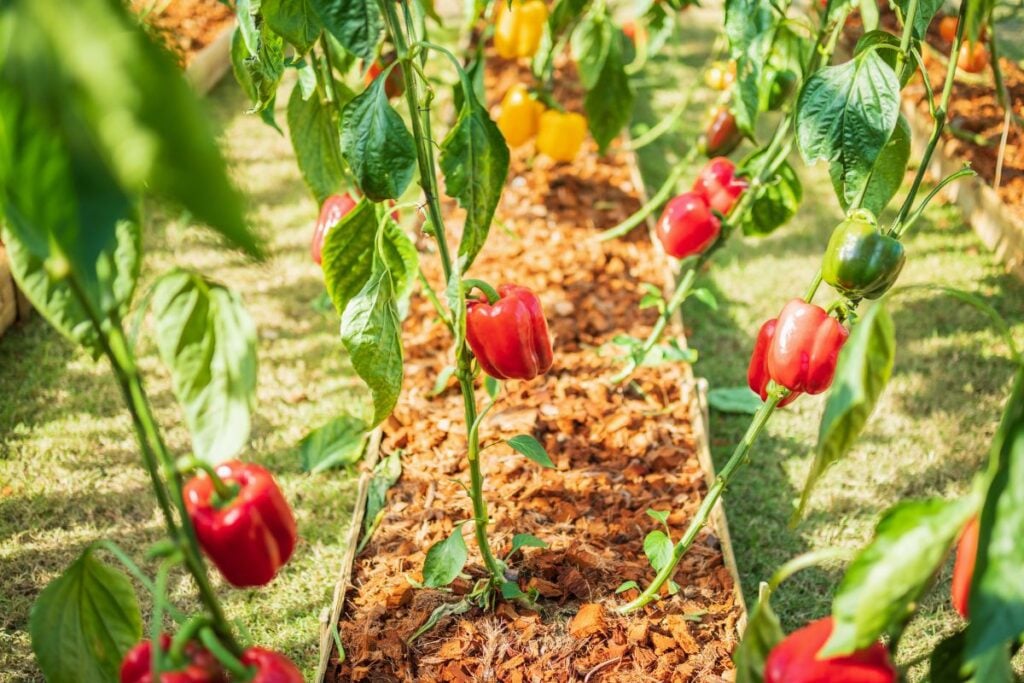
Can I grow pepper in a raised bed?
Yes, you can grow peppers in a raised bed.
The raised garden bed helps the crops in many ways.
It prevents the growth of weeds, and the raised bed soil quickly heats up, which lengthens the growing season for the plants.
It means that you can grow your peppers in raised beds for an extended period than in your garden soil.
Raised beds are especially best for peppers if you are residing in a place with heavy rainfall.
The raised bed quickly dries up and will not let your peppers drown in the wet soil.
Vegetable crops like pepper don’t need lots of watering to grow.
Therefore, it is best to use raised beds for growing peppers since their effective drainage system will maintain the right soil’s moisture and will not let your plant suffer from overwatering.
Why is it important to properly space pepper plants?
Spacing pepper plants at the proper distance in raised beds will help them to get the all the resources like air, water, and sunlight at their best.
Below I have mentioned why you should give your peppers the right amount of space between them.
1. To prevent overcrowding
The pepper plants will get overcrowded if you do not adequately space them.
There is a high chance that overcrowded plants will get attacked by pests and diseases, severely damaging their health.
2. To allow proper air circulation
The pepper plants will require a lot of fresh air for proper growth and development.
If the peppers are closely packed, they will grow into neighboring plants.
This situation will reduce the air circulation between them, so the leaves will take more time to dry after watering.
Wet leaves will further attract various pests and diseases to the plant.
3. To increase the plant’s productivity
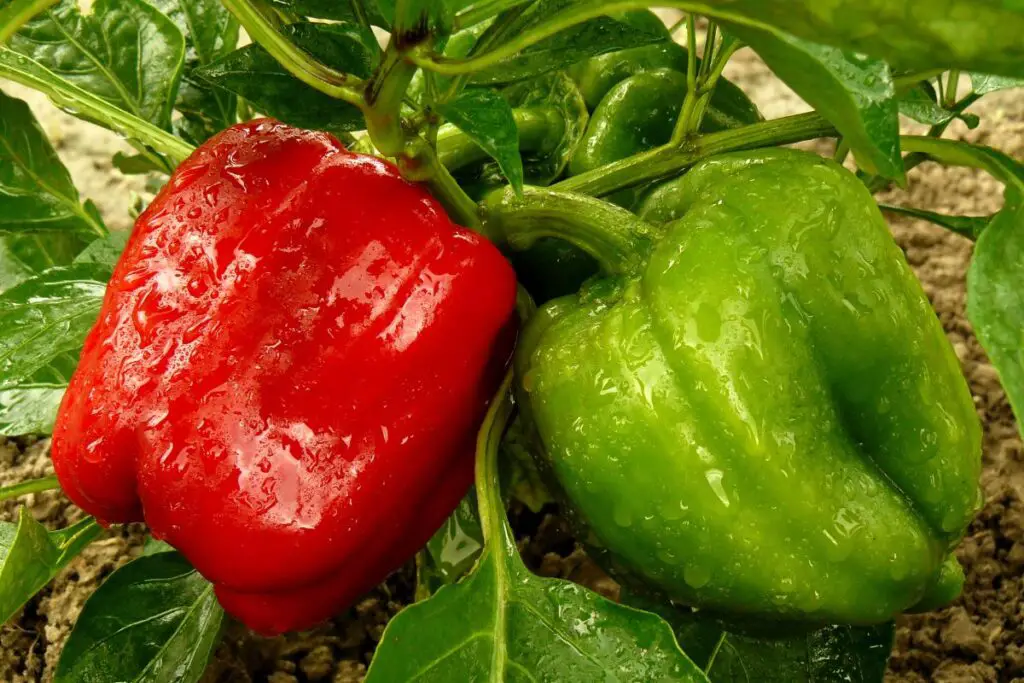
It is crucial to properly space the plants to increase their yield in the long run.
If the pepper plants are closely spaced, they will start competing for air, water, light, and nutrients.
The lack of ideal growing conditions will decrease the plant’s growth rate, producing fewer fruits.
4. To avoid hybrid creation
Hybrid creation will have fewer chances if you properly space the pepper plants.
The problem of hybrid creation usually occurs if you grow different varieties of peppers close to each other.
The insects will easily transfer the pollen grain from one pepper to another, creating new hybrids.
The taste and properties of the new hybrid will be different than what you expected.
Looking for gardening supplies? We have tested 100's of products before recommending them to you guys. Check out our best pick below:
| Image | Gardening Supplies | Best Price? |
|---|---|---|
 Top
Top Top
Top | Raised Garden Bed Kit | Check On Amazon |
 | XLUX Soil Moisture Meter, Plant Water Monitor, Soil Hygrometer Sensor for Gardening, Farming, Indoor and Outdoor Plants, No Batteries Required | No Results |
 Top
Top Top
Top | 82 Pcs Garden Tools Set and Extra Succulent Tools Set | Check On Amazon |
 | Joeys Garden Expandable Garden Hose with 8 Function Hose Nozzle, Lightweight Anti-Kink Flexible Garden Hoses, Extra Strength Fabric with Double Latex Core, (50 FT, Black) | No Results |
 Top
Top Top
Top | Dual Chamber Compost Tumbler | Check On Amazon |
 Top
Top Top
Top | Sunnyglade Plant Stakes | Check On Amazon |
 Top
Top Top
Top | Organic Cold Pressed Neem Seed Oil | Check On Amazon |
 Top
Top Top
Top | Mighty Mint Gallon :-Insect and Pest Control Peppermint Oil | Check On Amazon |
 Top
Top Top
Top | Scotts DiseaseEx Lawn Fungicide | Check On Amazon |
 Top
Top Top
Top | Jacks Classic 20-20-20 All Purpose Fertilizer | Check On Amazon |
 Top
Top Top
Top | 30,000 Seeds Pollinator Attracting Wildflower Mixture | Check On Amazon |
 Top
Top Top
Top | Survival Vegetable Seeds Garden Kit-Over 16,000 Seeds | Check On Amazon |
5. Harvesting becomes easy
It will become much easier to harvest the peppers if you properly space them.
If the plants have a minimum distance between them, it will become simpler for you to spot the peppers and pick them up in time.
How deep should you plant peppers in a raised bed?
The pepper crop is a woody climber that can reach up to a height of 10 meters.
The plants have shallow root systems, with some of the roots being lateral and that go below the soil to a depth of 2 m.
Since the roots of the plants grow deep down in the soil, the depth of the raised bed should be 10- 12 inches.
However, if you want to provide the roots more space to grow, you can prepare the raised bed beyond 12 inches.
How far should you should apart pepper plants in general?
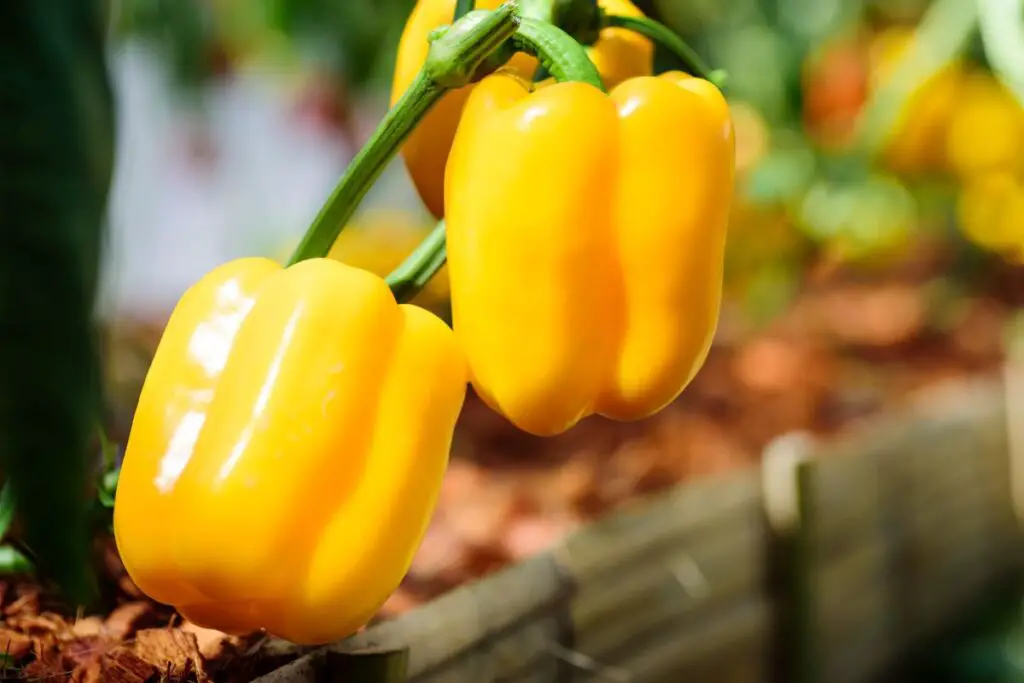
Different varieties of pepper plants have different growth patterns.
Some varieties grow wild and bushy, whereas some grow slender and tall.
The spacing of the peppers will vary with their growth patterns.
Most pepper varieties with medium growth should be spaced between plants 12 to 18 inches apart.
If the pepper varieties are large, they should be spaced 18-24 inches apart between plants.
This spacing arrangement will prevent the plants from competing in terms of space and resources.
How should you space pepper plants in raised beds?
How far apart to plant peppers in a raised bed garden will depend on the pepper variety.
Below I have discussed the plant spacing for most pepper varieties like Jalapeno peppers, super-hot habanero peppers, and bell peppers.
Bell pepper spacing requirements
Bell peppers are the largest pepper variety and the most commonly grown crop.
They usually grow taller than the hot pepper varieties like the serrano and jalapeno.
The plants can grow up to 3 to 3.5 feet tall and 15 to 18 inches wide in one season.
They have a slender growth rather than a busy growth, which is why they take up more space than other pepper varieties.
Therefore, you need to give your bell pepper plenty of space to grow in a raised bed.
I recommend you space bell peppers 18 inches apart in a raised bed.
The spacing for rows should be 30 to 36 inches apart.
The root system of bell peppers is extensive; hence this spacing will give them adequate space to develop.
Jalapeno pepper spacing requirements
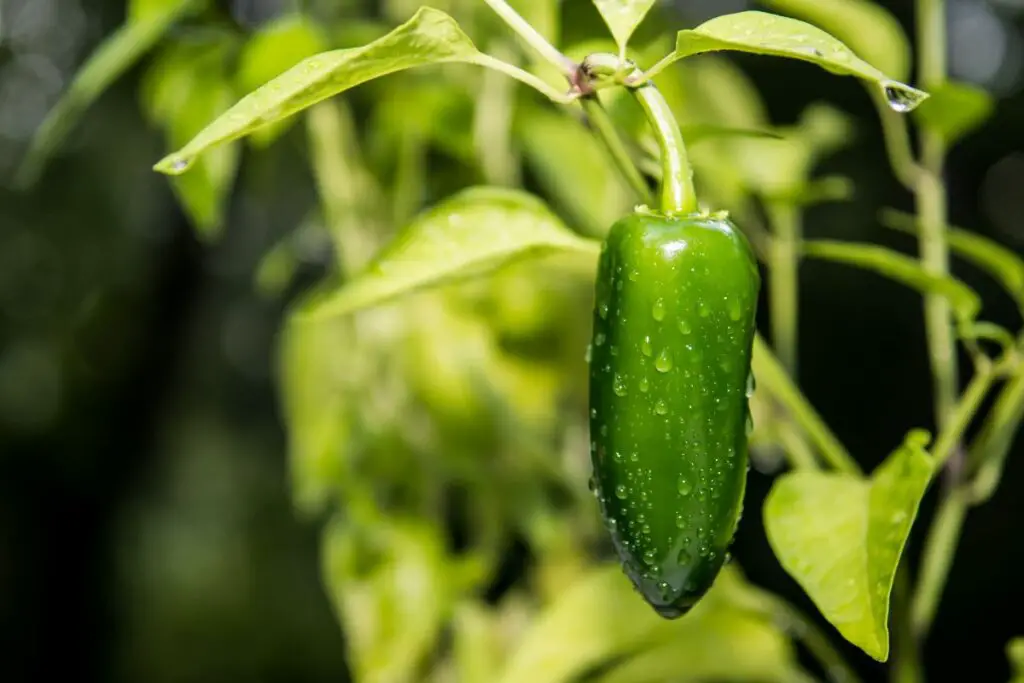
Jalapenos are hot pepper varieties popularly grown in home gardens.
They produce deep green fruits that add a spice element to most dishes.
The interesting thing about jalapeno is that each plant can generate several dozen peppers in a single season.
They are much smaller than bell peppers.
Since they do not grow as big as bell peppers, you can space them closer.
These productive pepper plants grow 1 to 3 feet tall in raised beds.
The plant has a compact growth so a closer spacing will work for them.
In raised beds, space the jalapeno pepper 12 to 18 inches apart and the rows 24 to 36 inches apart.
You can space them more if you want.
However, the plants will grow if you space them 18 inches apart.
Habanero pepper spacing requirements
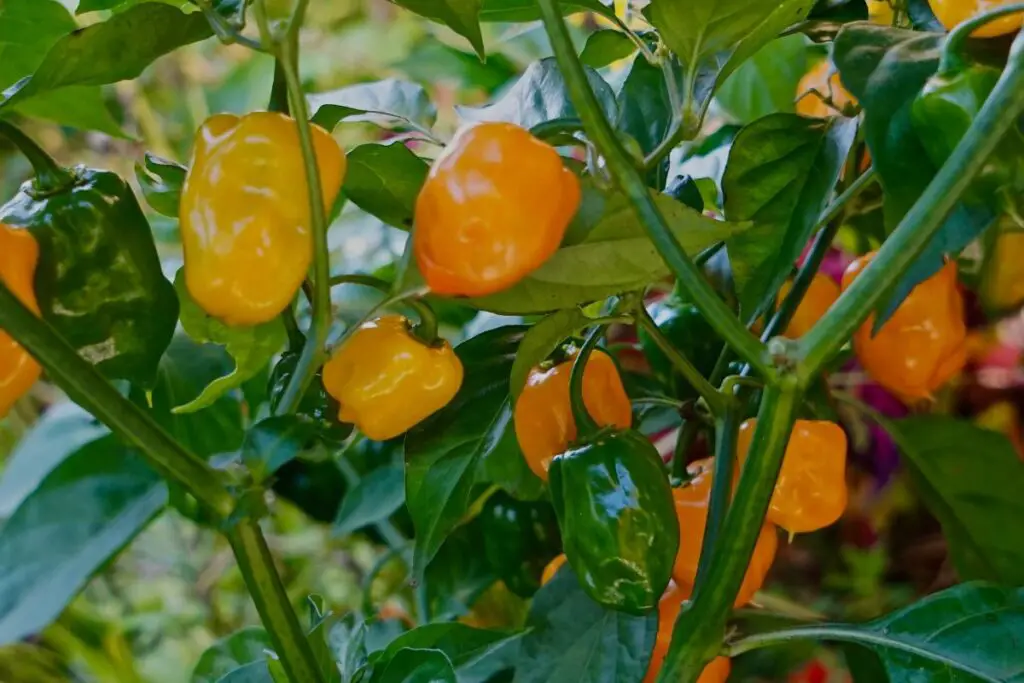
Habanero is a super spicy Chinese capsicum variety that grows larger than the jalapeno varieties.
Some other capsicum Chinese varieties, like the Scotch bonnet and Ghost pepper, also grow quite big.
The growth of this pepper variety depends on your geographical location.
For example, the peppers will grow 4 to 5 feet tall if the climate is warm.
They can grow up to a minimum of 3 feet tall in a raised bed but produce larger plants than cayenne or jalapeno peppers.
The spacing for habanero pepper should be 18 to 24 inches apart.
This spacing will help the plant reach a height of 5 feet in one season.
Optimal spacing will prevent the growth of weeds and will make the best use of the raised bed.
Cayenne pepper spacing requirements
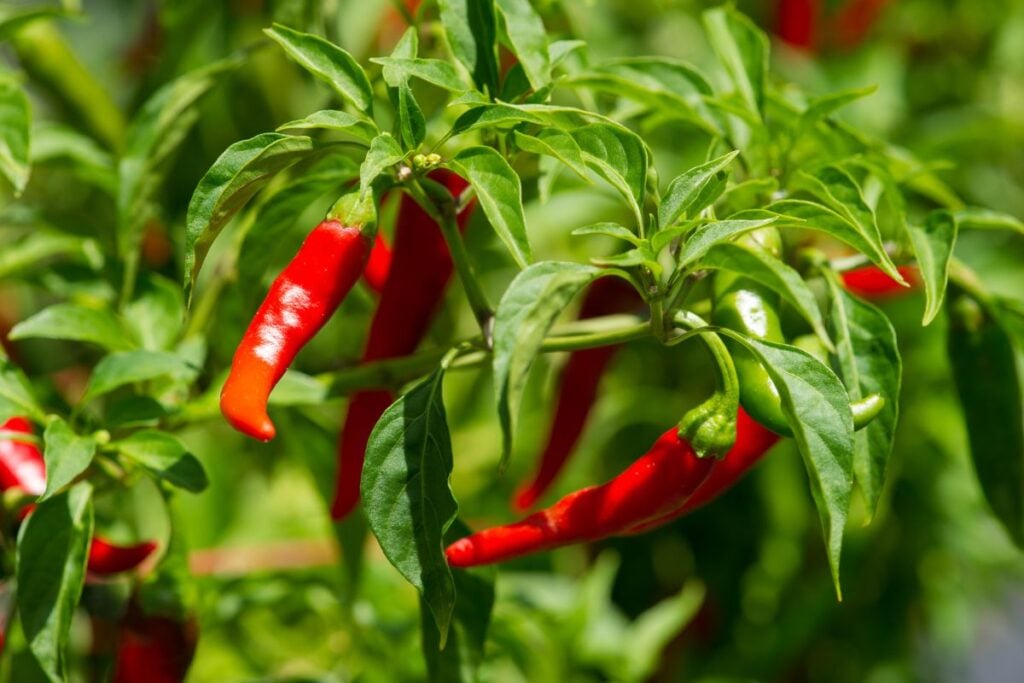
The cayenne peppers are hot chili peppers commonly used in their fresh form or in dried powder in several dishes.
Like jalapenos, these pepper plants grow up to 2 to 3 feet tall.
Spacing the seedlings 12 to 18 inches apart in raised will help them to achieve their ideal height.
How many peppers can you plant in a raised bed?
Peppers are fast-growing plants and can become very tall in no time.
Therefore, it’s important not to plant many peppers in one raised bed.
If you grow many peppers plants in one place, they will not thrive properly and will not yield enough fruits.
If you have a 4 x 4 raised bed, consider planting 6 to 8 pepper plants and not more than that.
Is trellis necessary for growing peppers in raised beds?
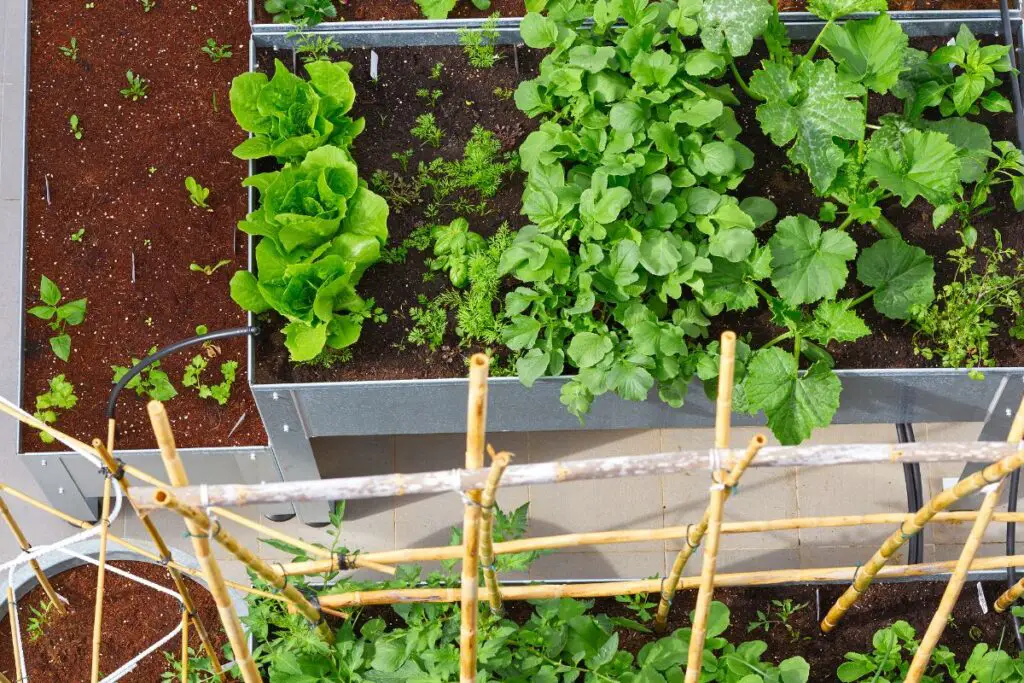
Many say that growing peppers in raised beds will require a trellis cage.
However, it is somehow true.
If you want your peppers to achieve their full height, consider adding a trellis.
A trellis or a cage around the plants will help them to grow taller and produce healthy peppers.
If the raised bed is small, adding a trellis will use less soil space.
Whenever you plant peppers, make sure to leave some space so that you can add a trellis later on.
Which pepper varieties can you grow in a raised bed?
In general, most pepper varieties grow nicely in raised beds.
However, some varieties may not do well in a raised bed.
You can grow bell peppers, a popular non-spicy pepper variety that do extremely well in a raised bed.
The Bell pepper variety loves to grow in warm temperatures, and the warm soil of the raised bed will suit their growing requirements.
Many other pepper varieties, such as the jalapeno and serrano, do well in a raised bed and are suitable growing crops for new gardeners.
Spicy pepper varieties such as the Ghost pepper and Carolina reapers grow well in raised beds.
What mistakes should you avoid while growing peppers in raised beds?
Peppers are one of the common vegetables grown in raised beds.
Yet, many gardeners face problems when their pepper plants don’t grow well.
Let us now discuss some common mistakes we make while growing peppers.
1. Planting too early
We often, out of excitement, rush to plant the peppers without waiting for the right planting time.
So the number one mistake we make is planting the peppers early.
The plants will have stunted growth if planted at the wrong time.
Therefore, they must be planted when the night temperatures are no lower than 55°F.
If the temperature falls below that level, avoid planting peppers.
Whenever you plant peppers, ensure that the soil and the air temperature are warm enough for them to grow.
2. Planting too closely
You might put your peppers in trouble if you space them too closely.
Peppers grow large, and if you space them too closely, they will not get adequate rooms to grow and will have poor airflow around them.
To avoid this mistake, plant your peppers with a minimum 2 feet distance between each plant.
This spacing will help the plants get enough breathing space and grow freely.
3. Overwatering
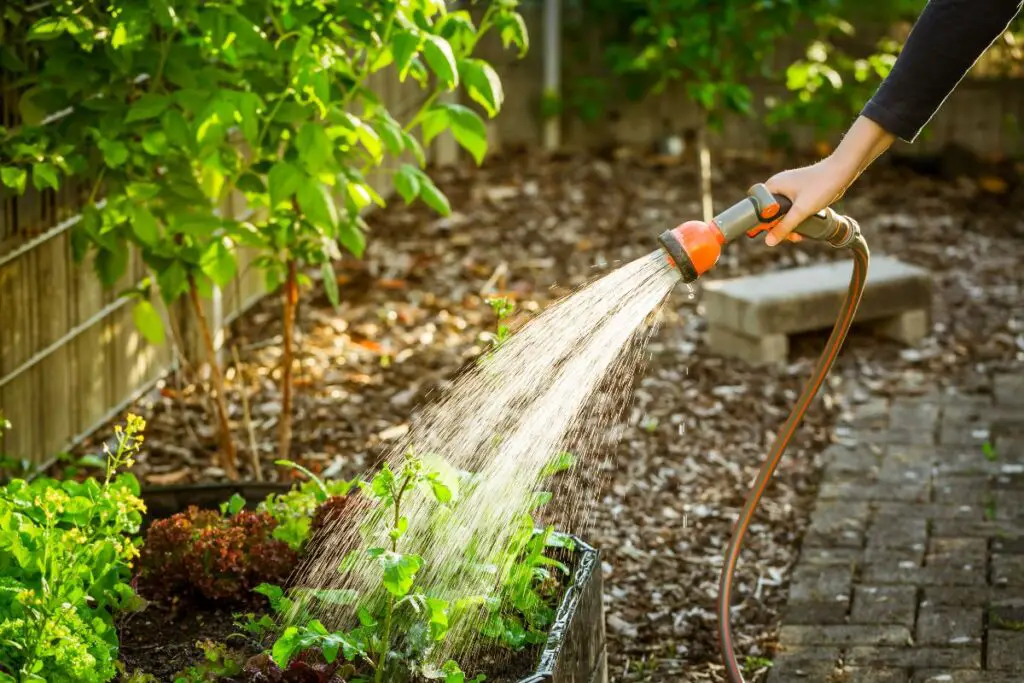
Watering is one common area where gardeners do mistakes.
They may overwater the plants or don’t water them enough.
To avoid this mistake, you need to know the watering requirements of your plant.
Peppers plants should get watered deeply.
Deep watering is when the plant is watered for longer periods and fewer days a week.
Check the soil’s moisture level before watering the plant.
Insert your finger 2 inches deep in the soil and if it feels dry, water the plant.
But if the soil feels wet, wait a day or two before testing again.
Proper watering will help the plant to establish a strong root system and good health.
4. Over-fertilizing
We often overfeed the plants thinking that adding more fertilizers will yield more fruits.
Sadly, it’s not true, and overfeeding can cause more harm to plants.
To avoid this mistake, you should know how much fertilizers to be added to pepper plants.
For most pepper varieties, fertilizing should start about 1-2 weeks when the seeds have sprouted.
The fertilizer for peppers should be high in phosphorus and potassium and low in nitrogen.
You should add the fertilizers at half strength to prevent the chances of overfeeding.
5. Using inappropriate soil
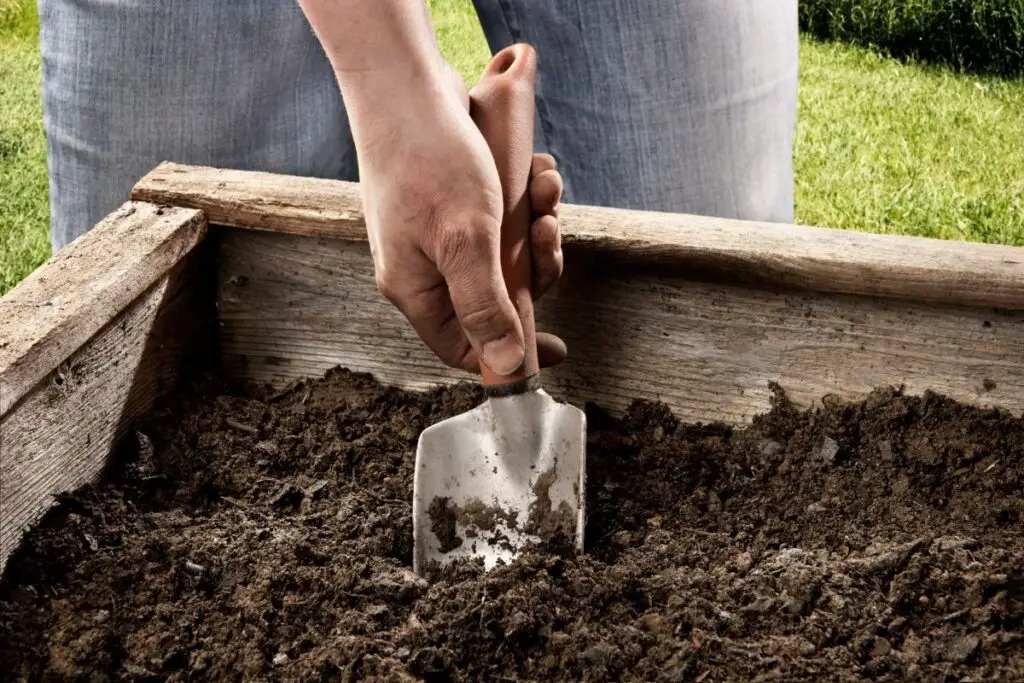
Pepper plants grow in sandy, well-drained, and neutral pH soil.
You can purchase a ready-to-use soil mix for peppers or prepare the ideal mix at home.
Please prepare your soil mix at home, as it will have all the ingredients in an adequate amount for growing pepper plants.
To prepare the soil mix, take the potting mix, vermiculite, perlite, and compost in a ratio of 4:2:2:2.
Before filling the raised bed, check the pH level of the soil. Ensure the soil is neutral and not acidic.
7 Best DIY Raised Bed Soil Mix: A Step-by-step Guide
6. Too much or too little sunlight
One mistake we can make is growing the peppers in that area of the raised bed where they either get too much or too little light.
Pepper plants need about 6 to 8 hours of sunlight daily.
The peppers will reduce their production if they don’t get enough sunlight.
Grow the peppers in a spot where they will get midday and afternoon sun most of the day.
Although peppers receive more than 8 hours of sunlight, they can get sunburns.
Cover the plants with a cloth or grow companion plants to prevent excess light.
7. Neglecting pests and diseases
It is difficult to know what’s happening to your peppers at the microscopic level.
Peppers may get infected with pests and diseases faster than you may realize.
If you don’t give the plants enough care during their early stages, the pests can seriously harm them.
Insect pests like aphids, whiteflies, hornworms, and leafhoppers can severely infest your pepper plants.
Most diseases that harm pepper plants are fungal-related.
If you notice any infected part of the plant, treat it will take fungicide or insecticide.
Avoid overwatering and adequately space the plant to ensure proper airflow between them.
8. Harvesting at the wrong time
We often harvest the peppers early since we want to taste the fruits of our labor, which is when we make a mistake.
However, there is a proper time for harvesting the pepper plants.
If we keep a little patience and wait until the optimal time, we will be rewarded with a quality harvest.
Harvest the peppers only when they have vibrant, assigned colors.
You have missed the ideal harvesting time if the pepper starts fading its original color.
For example, green pepper will turn red if you don’t pick them up at the right time.
Reference: ScienceDirect, American Society of Agronomy, Noble Research Institute, Soil for Raised Beds, Raised Bed Gardening, Tomatoes in the Garden.
